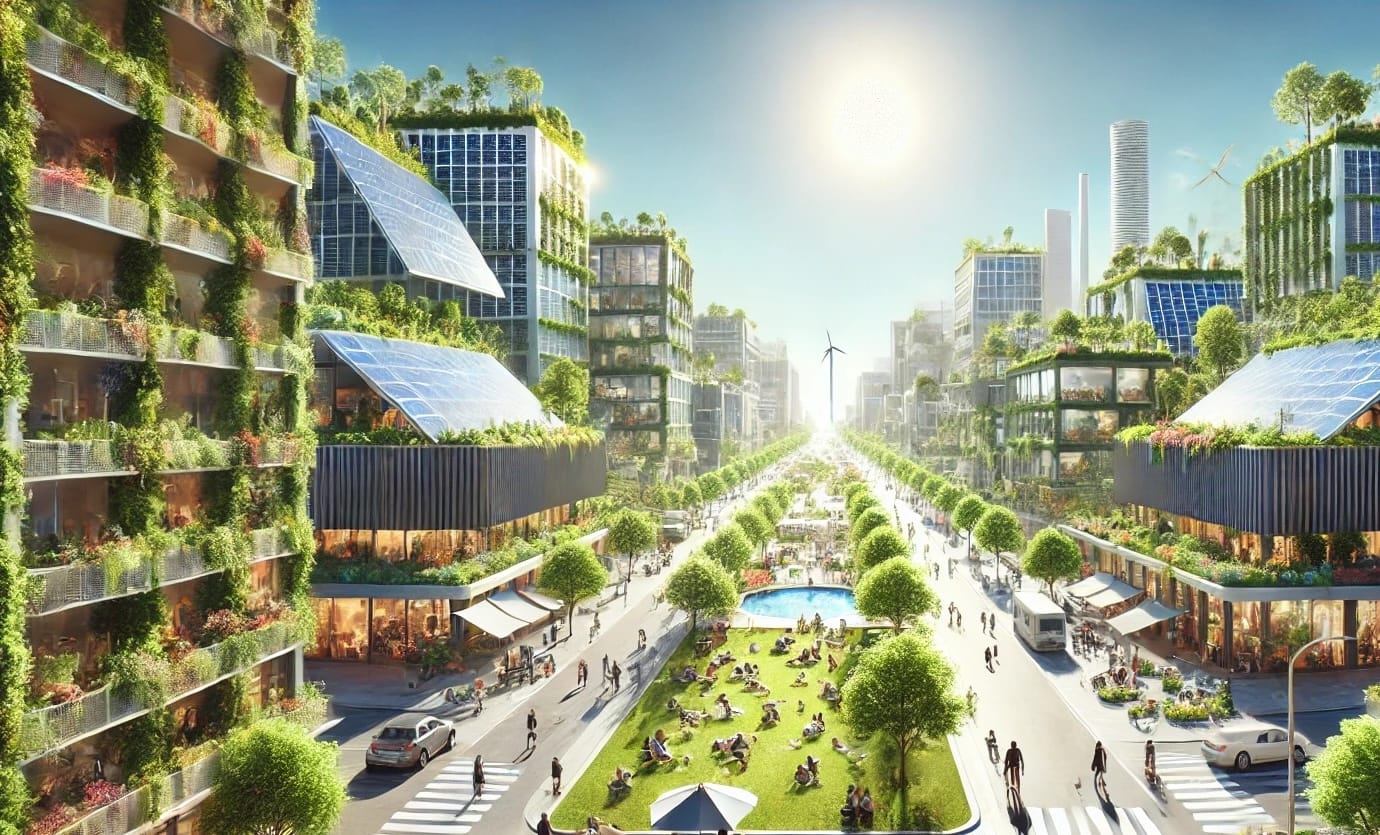
Glimpses of the solarpunk future
As William Gibson said, the future is already here. It's just not evenly distributed.
We already possess technologies that could create a world that's more sustainable, prosperous and equitable than the world as it is today. What's holding us back is that those technologies haven't rolled out to the majority of humanity. But that day is coming, and when it arrives, our civilization will undergo a dramatic transformation.
At the top of the list is solar power. Solar (and renewable energy in general) has two crucial traits: it's incredibly cheap—now far cheaper than fossil fuel—and it's available everywhere, which makes it inherently decentralized. These facts point to a radically different future than the world we're used to, where oil, gas and coal have to be transported over long distances from where they're dug up to where they're burned.
There are other transformative technologies in the pipeline as well. When you combine them with abundant clean energy, you can glimpse one possible future, like catching sight of a distant valley through a gap in the clouds. Call this possibility the solarpunk future, after the name coined by literary and artistic dreamers.
In the solarpunk world, every building would be a passive house that uses little or no energy for heating or cooling. In extreme climates where more is needed, heat pumps could handle it easily. Solar panels on every rooftop, combined with battery storage, would supply the power needed for daily life almost for free. Every town and village would be connected in its own microgrid, intelligently sending energy from where it's produced to where it's needed.
Manufacturing would be fully automated. Most consumer goods, instead of being assembled by little-better-than-slave labor in brutal factories as they are today, would be produced when and where they're needed. Every community would have its own makerspace or fab lab with advanced 3-D printers and other machines, capable of creating everything from clothing to appliances to furniture on demand. Everyday goods would be manufactured from freely available open-source templates that can be swapped around, modified and improved. They'd be designed with sustainability in mind, making repairs and upgrades straightforward, as opposed to proprietary products made to be thrown away.
Food, too, could be grown locally, within a day's travel of where it's eaten. With high-tech precision farming and the widespread use of robots that can plant, tend and harvest crops, there'd be no need for humans to perform the grueling labor of agriculture. There'd also be no need for energy-intensive long-distance shipments—or at least, they'd be reserved for specialty and luxury products. As opposed to the inherent fragility of just-in-time capitalism, every region would be self-sufficient, able to provide for its inhabitants without far-away industrial megafarms or exploited migrant labor.
Transportation, like manufacturing, would see costs plunge thanks to cheap clean energy. High-speed electric trains would be the backbone of a reliable, safe transit network connecting major population centers. For smaller and more out-of-the-way places, every village would have its own fleet of autonomous, self-driving electric taxis. Rather than the expense and unnecessary duplication of everyone owning their own car—which sits idle in a driveway or garage 95% of the time—these vehicles could be summoned on demand to take you wherever you want to go, then go on to serve the next request. This would virtually eliminate car-crash deaths and daily traffic jams.
As a side benefit, this would also bring about the end of car culture. In the world as it is today, vast expanses of precious space are devoted to roads, garages and parking lots. In the solarpunk world, that wouldn't be needed. In place of acres of asphalt and soulless suburban sprawl and highways like impassable barriers, we could return to pleasant, walkable towns with parks and green spaces and pedestrian plazas lined with cafes and small shops, where housing is plentiful and affordable and everything you need on an average day is within a few minutes' stroll of your front door.
Best of all, universal green energy would make communities resilient to climate change and the floods, storms and other natural disasters that come with it. Solar, wind and geothermal power need no long-distance supply lines that can be severed, no tankers that foul the seas and the coasts, no pipelines that have to be bulldozed through pristine wilderness and cause ecological catastrophe when they leak.
It will also mean a more peaceful, more equitable world. Everyone has equal access to the sun and the wind. There will be no massive power plants for terrorists to sabotage, no resource-rich regions for greedy and warlike nations to covet, no sacrifice zones ravaged by extraction, and no corporate oligarchies that profit by keeping a stranglehold on the world's access to energy.
This is an ambitious picture, but none of it is science fiction. Green energy, 3-D printers, autonomous robotics and these other technologies already exist. Some are more advanced than others, but there's no doubt the ones that are lagging will keep improving.
There is room to doubt if these technologies will eventually become available to everyone, or whether they'll remain playthings of the rich and the privileged. But that's a problem we can solve through the political process. If enough of us demand it, we can bring forth a solarpunk utopia for everyone. It may not be as far off as you think.
